
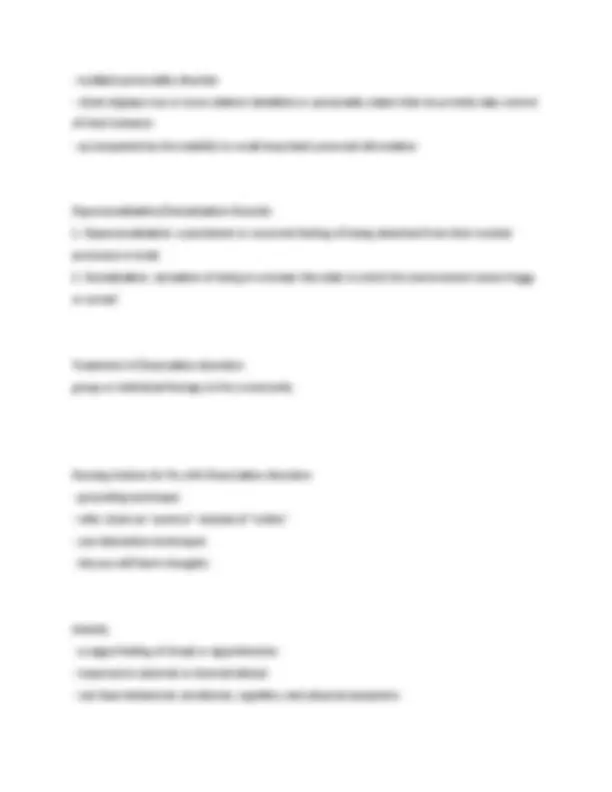
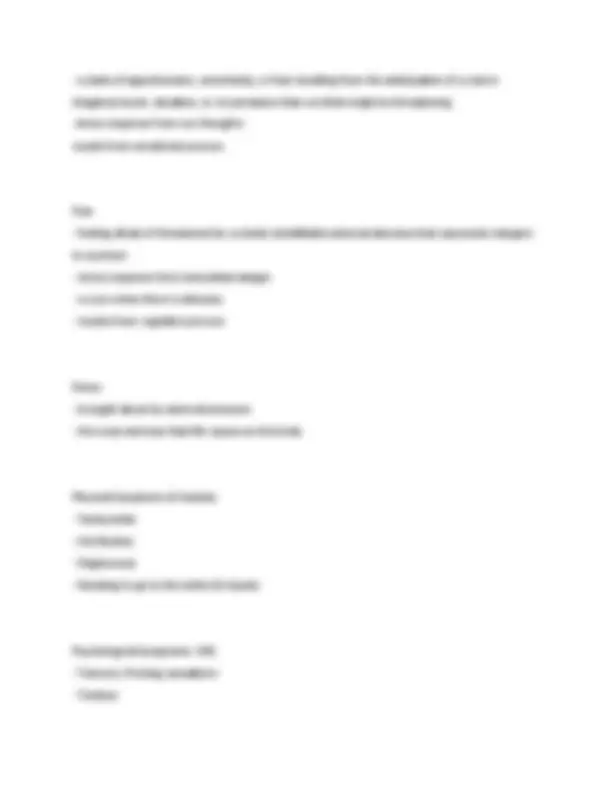
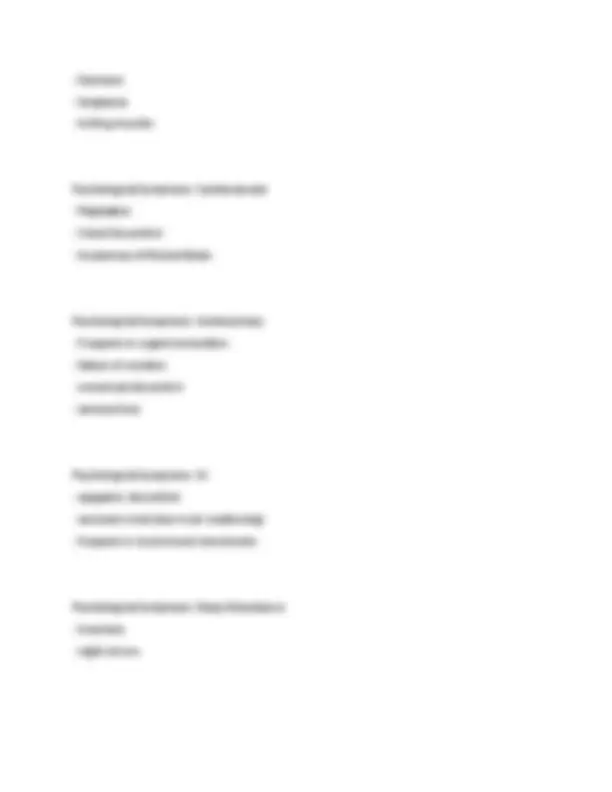
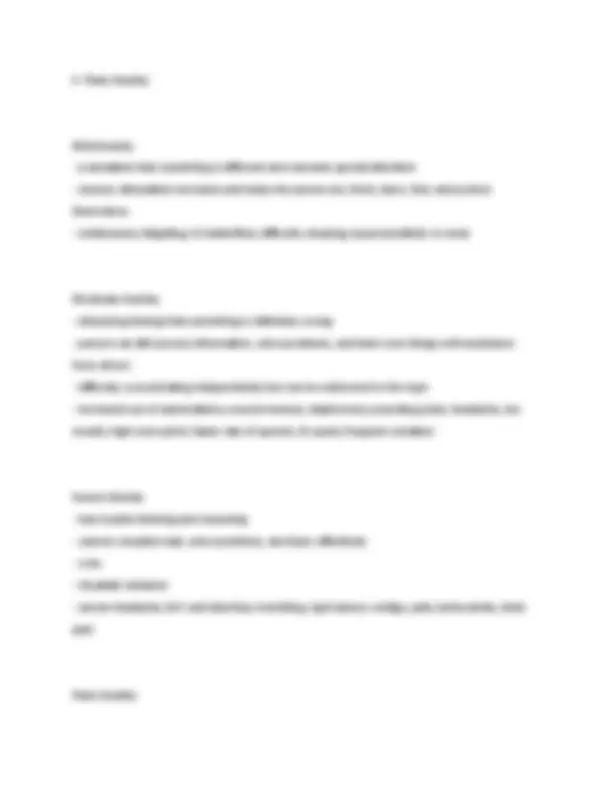
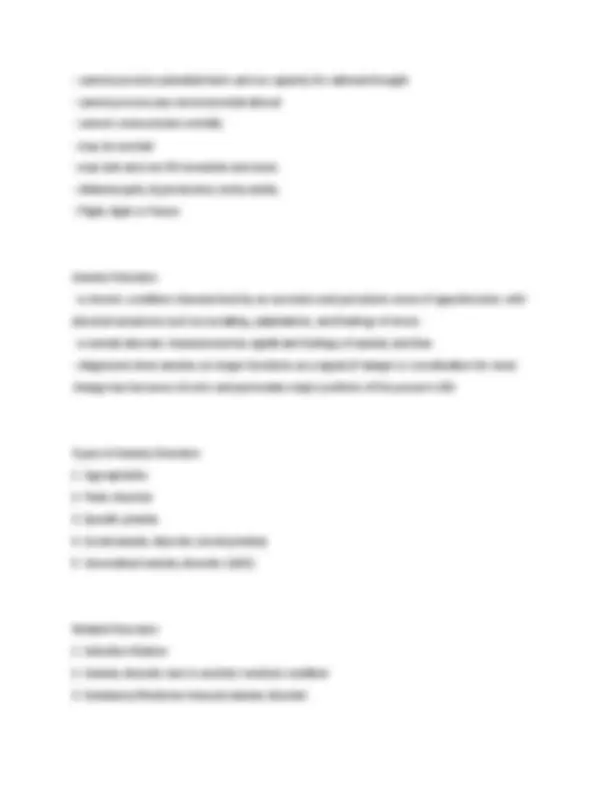
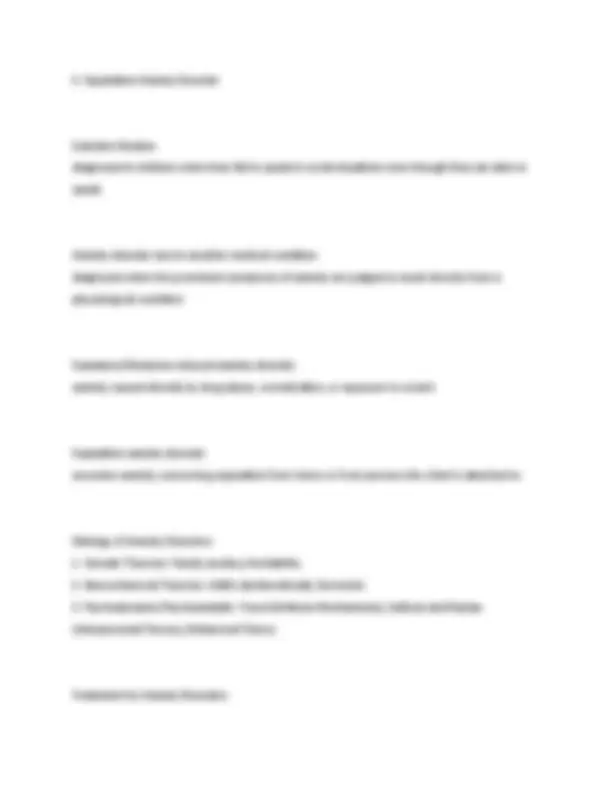
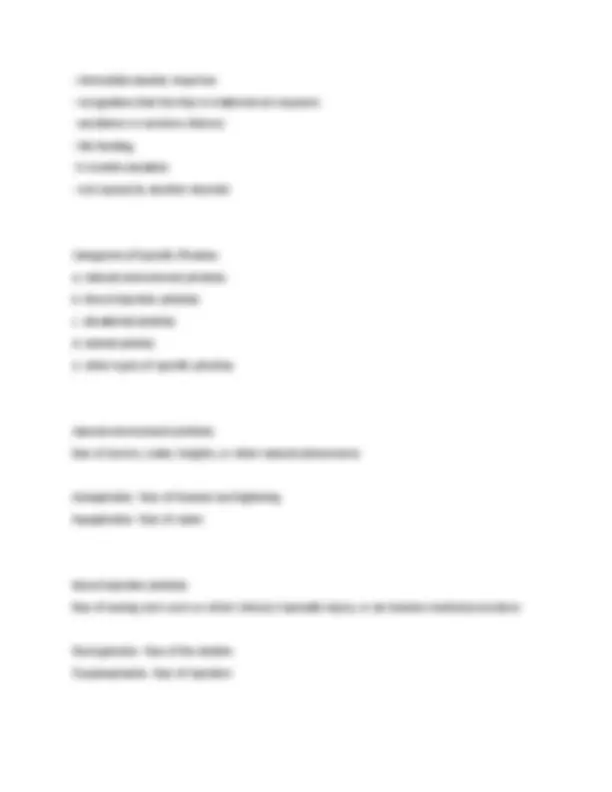
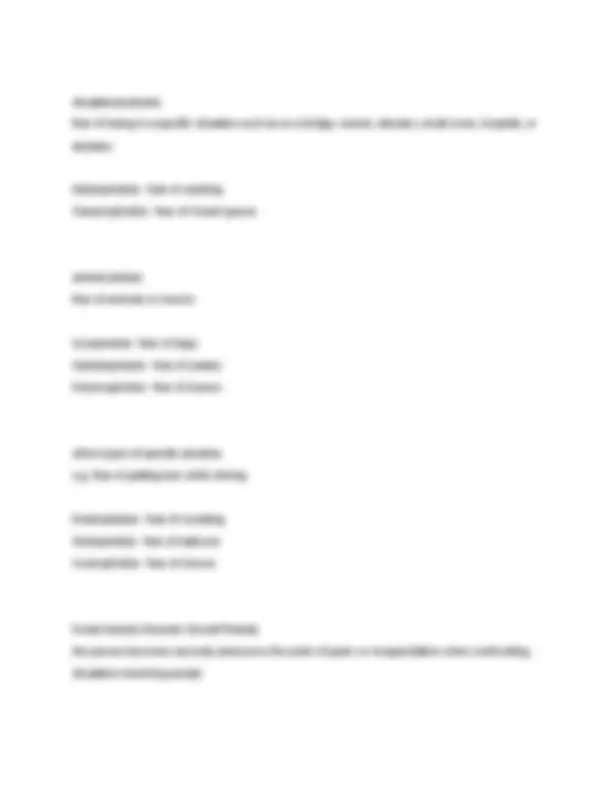
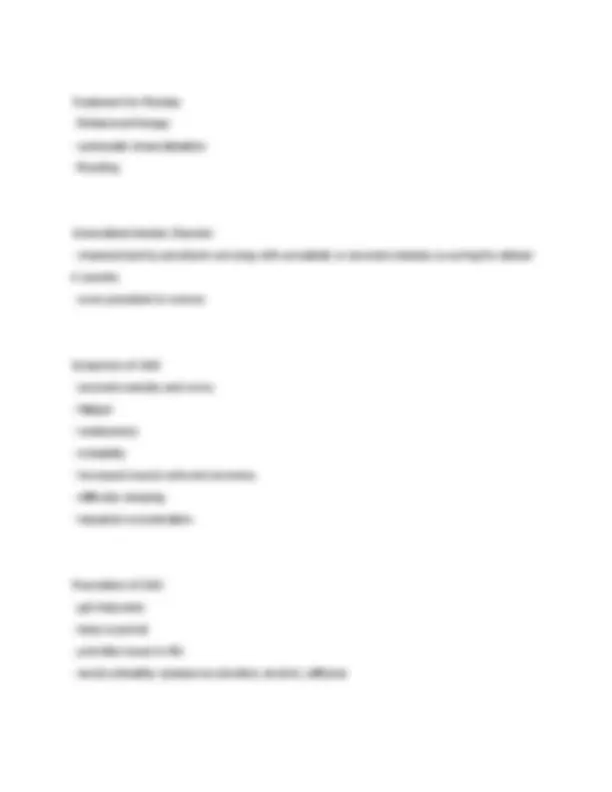
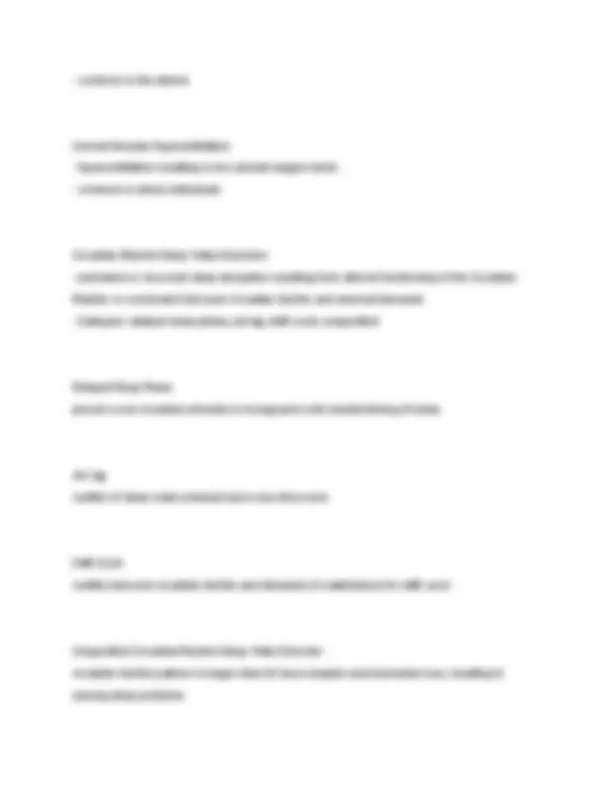
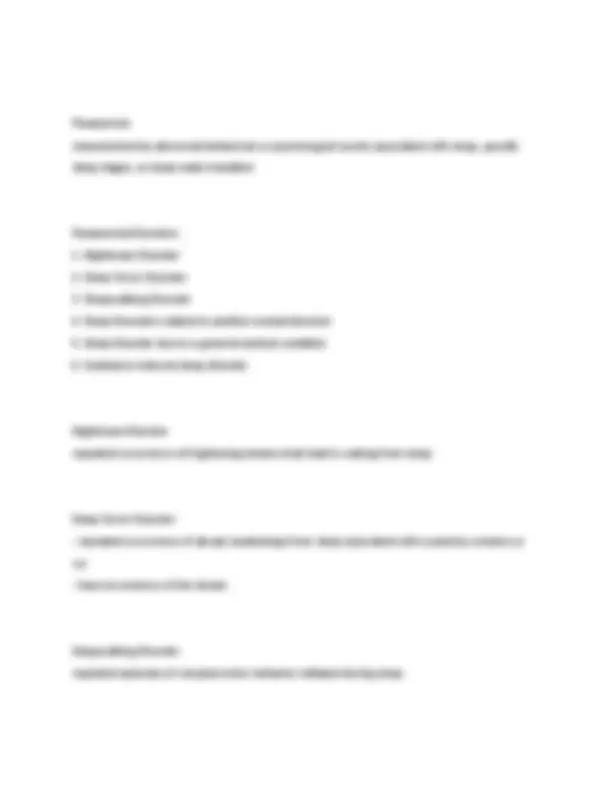
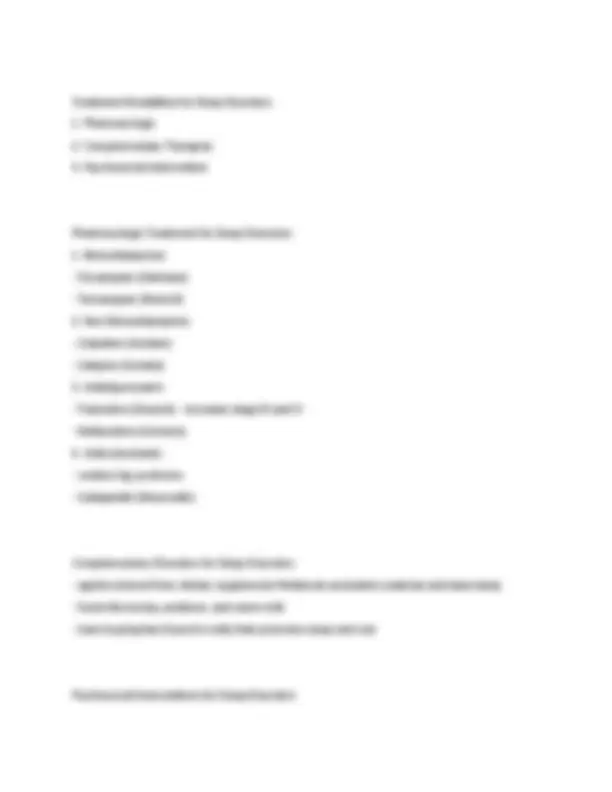
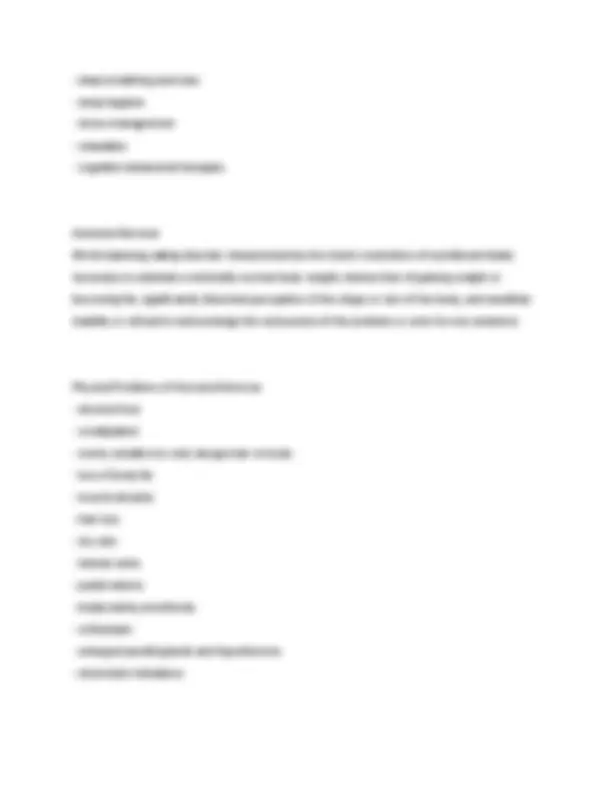
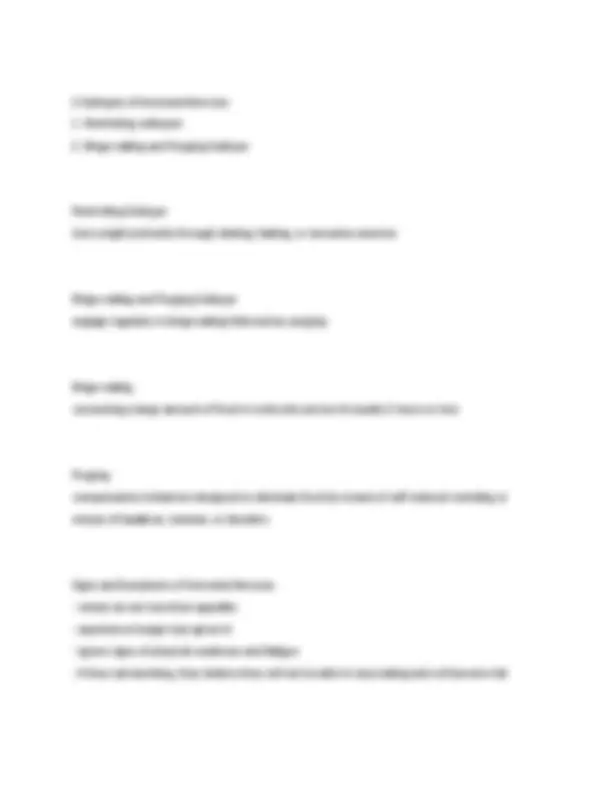
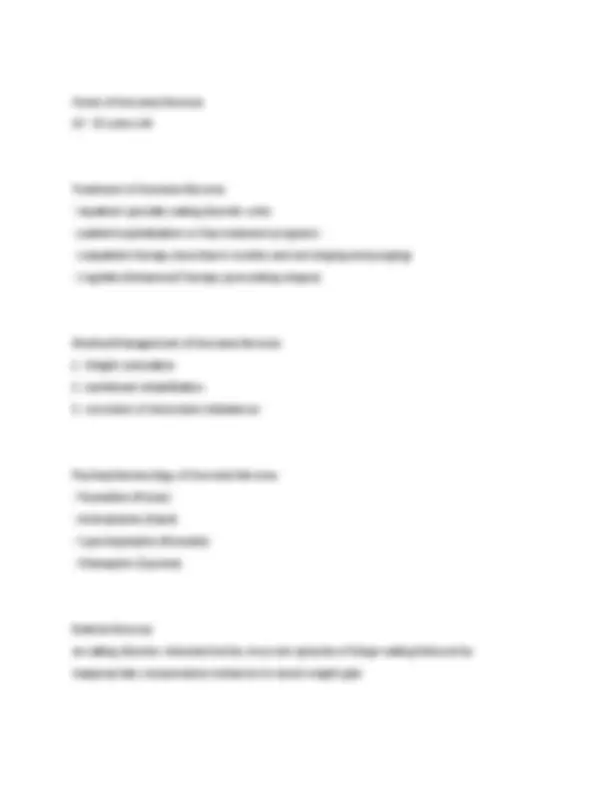
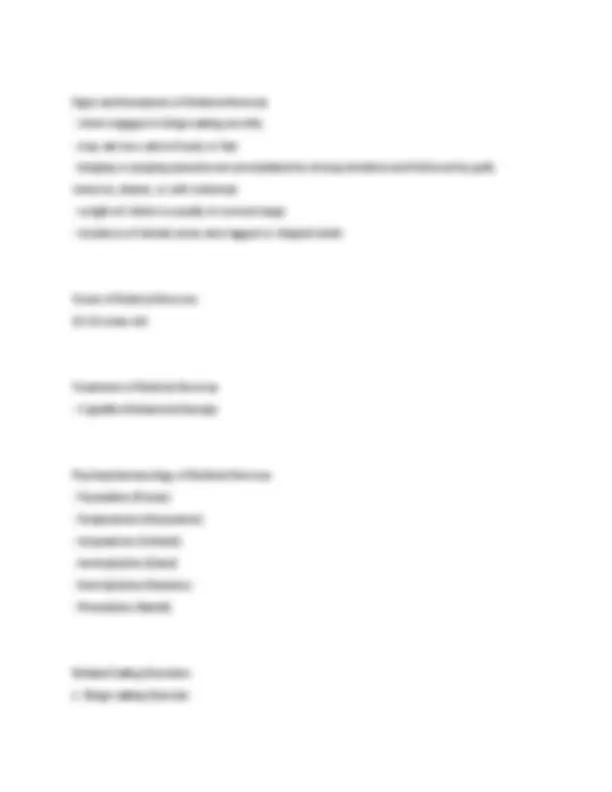
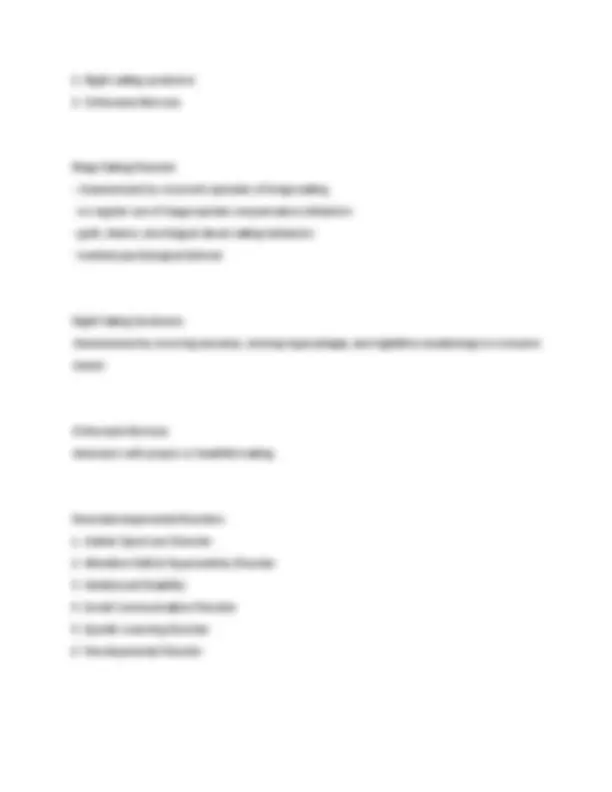
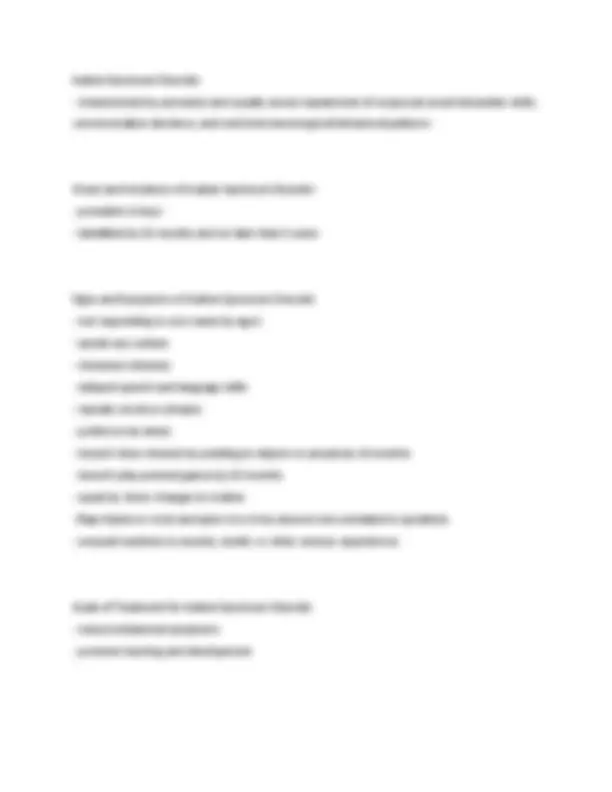
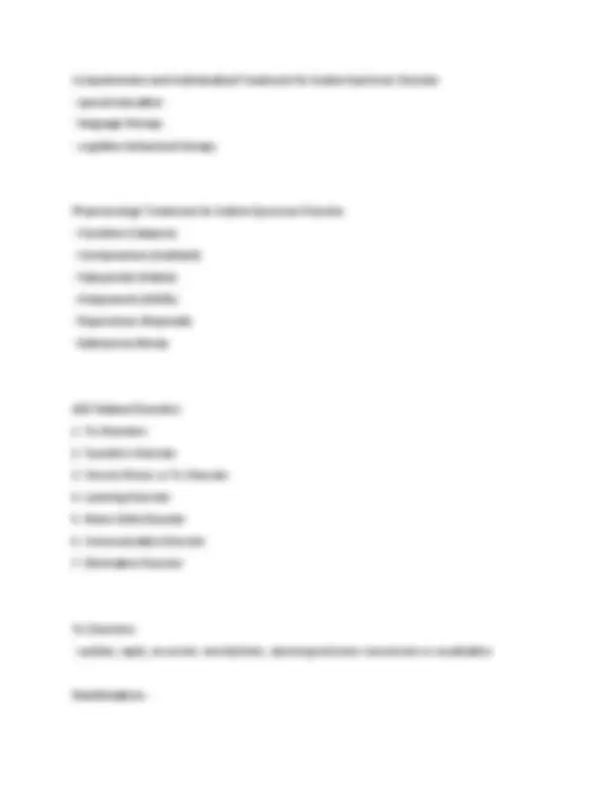
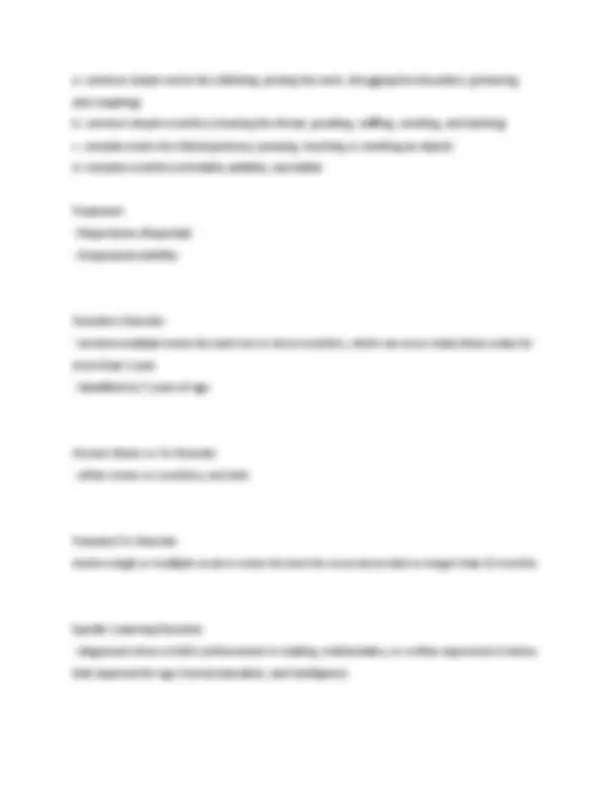
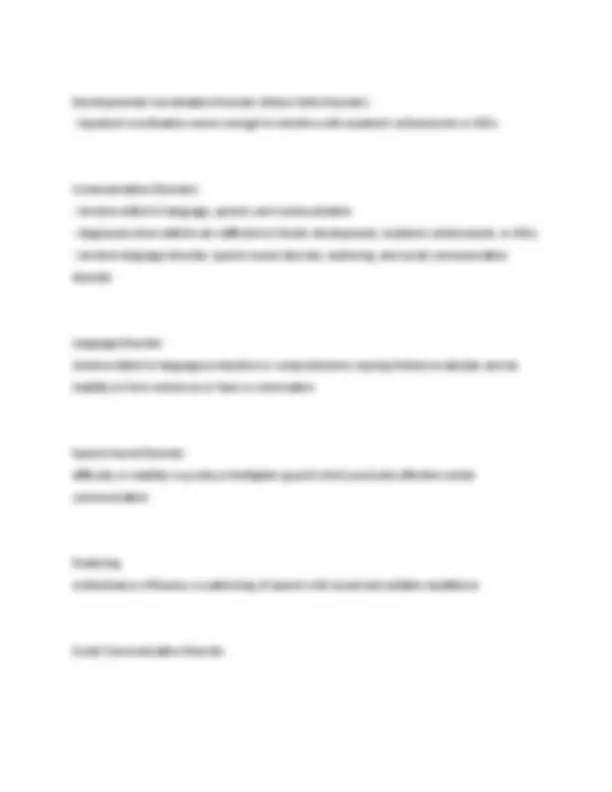
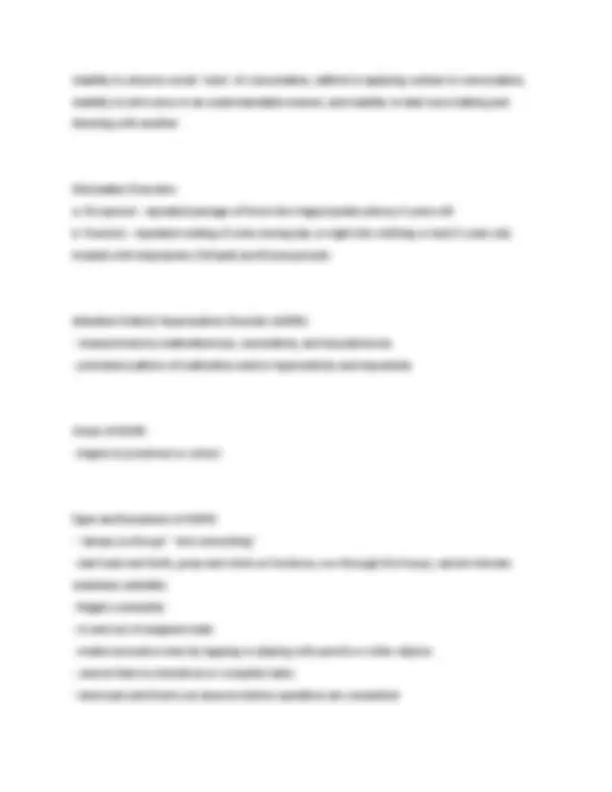
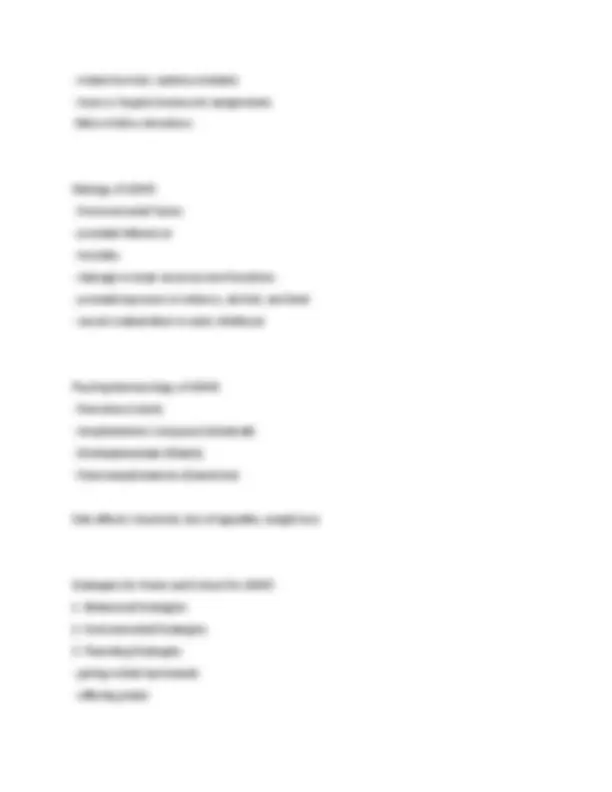
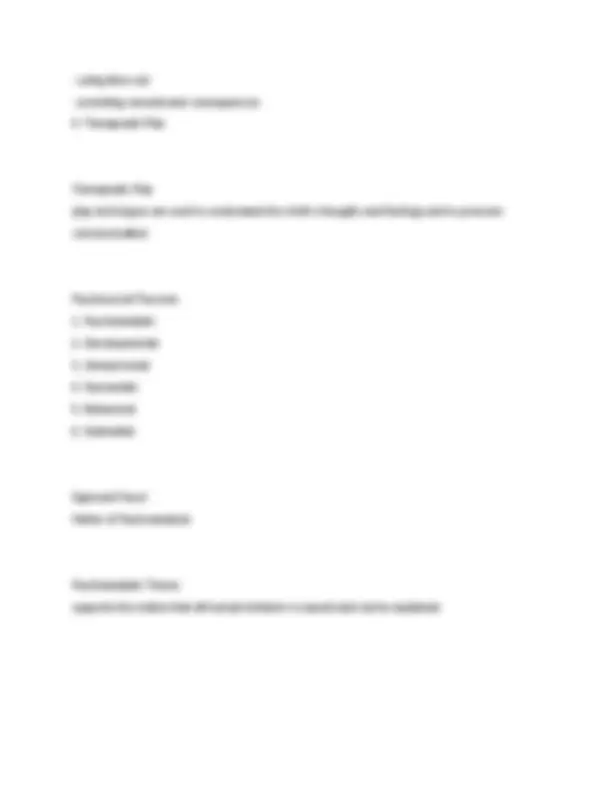


Study with the several resources on Docsity

Earn points by helping other students or get them with a premium plan


Prepare for your exams
Study with the several resources on Docsity

Earn points to download
Earn points by helping other students or get them with a premium plan
Community
Ask the community for help and clear up your study doubts
Discover the best universities in your country according to Docsity users
Free resources
Download our free guides on studying techniques, anxiety management strategies, and thesis advice from Docsity tutors
Psychiatric-Mental Health Nursing 8th Edition Videbeck Test Bank Post-traumatic stress disorder (PTSD) a disturbing pattern of behavior demonstrated by someone who has experienced, witnessed, or been confronted with a traumatic event such as a natural disaster, combat, or an assault. Four Subcategories of PTSD 1. reexperiencing the trauma through dreams or recurrent and intrusive thoughts 2. avoidance 3. negative cognition or thoughts 4. hyperarousal Manifestations of PTSD - flashbacks - feels a numbing of general responsiveness - persistent signs of increased arousal - losing a sense of connection and control over life Onset of PTSD
Typology: Exams
1 / 32

This page cannot be seen from the preview
Don't miss anything!

























Post-traumatic stress disorder (PTSD) a disturbing pattern of behavior demonstrated by someone who has experienced, witnessed, or been confronted with a traumatic event such as a natural disaster, combat, or an assault. Four Subcategories of PTSD
Resistance Stage
situational phobia fear of being in a specific situation such as on a bridge, tunnel, elevator, small room, hospital, or airplane Ablutophobia - fear of washing Claustrophobia - fear of closed spaces animal phobia fear of animals or insects Cynophobia - fear of dogs Ophidiophobia - fear of snakes Entomophobia - fear of insects other types of specific phobias e.g. fear of getting lost while driving Emetophobia - fear of vomiting Globophobia - fear of balloons Coulrophobia - fear of clowns Social Anxiety Disorder (Social Phobia) the person becomes severely anxious to the point of panic or incapacitation when confronting situations involving people
Insomnia
Parasomnia characterized by abnormal behavioral or psychological events associated with sleep, specific sleep stages, or sleep-wake transition Parasomnia Disorders
Treatment Modalities for Sleep Disorders